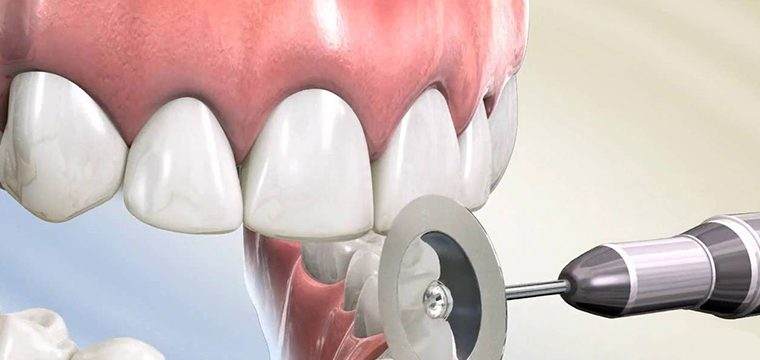In the realm of orthodontics, various techniques and procedures are utilized to achieve optimal dental alignment and aesthetics. One such procedure, often abbreviated as IPR, holds significant importance in the treatment process. IPR stands for Interproximal Reduction, a technique that involves the strategic reduction of enamel between adjacent teeth to create space for alignment. This article delves into the intricacies of IPR, its purpose, methods, considerations, and its role in enhancing orthodontic outcomes.
What Is IPR?
Interproximal Reduction, or IPR, is a dental procedure performed in orthodontic treatments to create minimal space between teeth. This procedure involves selectively removing a small amount of enamel from the sides of adjacent teeth, primarily at the contact points where they touch each other. By reducing these contact areas, orthodontists can achieve better alignment of teeth within the dental arch.
Purpose of IPR
The primary goal of IPR is to facilitate proper alignment of teeth, especially in cases where there is mild to moderate crowding or overlapping of teeth. By creating additional space, IPR helps orthodontists achieve several key objectives:
Facilitate Tooth Movement: By reducing the width of specific teeth, IPR allows for controlled movement during orthodontic treatment. This controlled movement helps in aligning teeth into their desired positions.
Improve Occlusion: Proper alignment of teeth leads to improved occlusion, or the way upper and lower teeth fit together when the mouth is closed. This not only enhances the aesthetic appearance of the smile but also improves overall dental function.
Reduce Reliance on Tooth Extraction: In some cases, mild to moderate crowding can be managed effectively with IPR, reducing the need for extracting teeth to create space. This conservative approach preserves natural tooth structure and maintains a harmonious dental arch.
SEE ALSO: Which Orthodontic Treatment Is Faster?
Methods of Performing IPR
IPR is a technique-sensitive procedure that requires precision and careful planning. The process typically involves the following steps:
Assessment and Treatment Planning: Before performing IPR, the orthodontist conducts a thorough examination of the patient’s teeth using diagnostic tools such as X-rays and intraoral scans. This assessment helps in determining the amount of enamel that needs to be removed and the teeth involved in the procedure.
Isolation of Teeth: To ensure accuracy and prevent damage to neighboring teeth, the orthodontist isolates the teeth undergoing IPR using dental separators or other isolation techniques.
Enamel Reduction: Using specialized dental instruments such as fine diamond strips or discs, the orthodontist carefully reduces the enamel between the teeth. The amount of enamel removed is minimal, typically ranging from 0.1 to 0.5 millimeters per tooth. The reduction is performed gradually and evenly to achieve symmetrical results.
Polishing and Finishing: Once the desired amount of enamel has been removed, the surfaces of the teeth are polished to smooth any rough edges and ensure a seamless fit between teeth during alignment.
Considerations And Precautions
While IPR is considered a safe and effective procedure when performed by trained professionals, several considerations and precautions should be taken into account:
Patient Selection: Not all patients require or are suitable candidates for IPR. The decision to perform IPR is based on the severity of crowding, the overall health of teeth and gums, and the treatment goals.
Risk of Tooth Sensitivity: Since IPR involves enamel removal, there is a potential risk of increased tooth sensitivity, especially to hot or cold temperatures. Orthodontists may recommend desensitizing agents or fluoride treatments to alleviate discomfort.
Monitoring and Follow-Up: Regular monitoring of the teeth and gums during orthodontic treatment is essential to ensure that IPR has achieved the desired outcomes without compromising dental health.
Alternative Treatments: In cases of severe crowding or structural abnormalities, alternative treatments such as tooth extraction may be necessary. Orthodontists evaluate each case individually to determine the most appropriate treatment plan.
Advantages of IPR
IPR offers several advantages in orthodontic treatment:
Conservative Approach: By preserving natural tooth structure, IPR minimizes the need for more invasive procedures such as tooth extraction.
Enhanced Aesthetics: Proper alignment of teeth improves the overall appearance of the smile, boosting confidence and self-esteem.
Improved Function: Well-aligned teeth contribute to better chewing efficiency, speech clarity, and long-term oral health.
Shorter Treatment Duration: In some cases, IPR may expedite the orthodontic treatment process by facilitating smoother tooth movement and alignment.
Challenges And Limitations
Despite its benefits, IPR has certain challenges and limitations:
Technique Sensitivity: IPR requires precise execution to avoid over-reduction or damage to tooth enamel, which could compromise dental health.
Patient Compliance: Patients must adhere to orthodontic instructions and maintain good oral hygiene to ensure successful outcomes following IPR.
Case Suitability: Not all cases of dental crowding can be effectively managed with IPR alone. Orthodontists must carefully evaluate each patient’s dental anatomy and treatment needs.
Future Directions in IPR
Advancements in dental technology and materials continue to refine the practice of IPR in orthodontics. Innovations such as computer-aided design (CAD) and 3D imaging enable orthodontists to plan and execute IPR with greater precision and predictability. Additionally, ongoing research aims to enhance techniques for enamel preservation and minimize potential risks associated with IPR.
Conclusion
In conclusion, Interproximal Reduction (IPR) plays a crucial role in modern orthodontic treatments by creating space between teeth to achieve optimal alignment and improve dental aesthetics. By understanding the purpose, methods, considerations, and outcomes of IPR, orthodontists can effectively incorporate this technique into comprehensive treatment plans tailored to individual patient needs. As dental technology evolves, IPR continues to evolve as a valuable tool in enhancing smile aesthetics and overall oral health.

